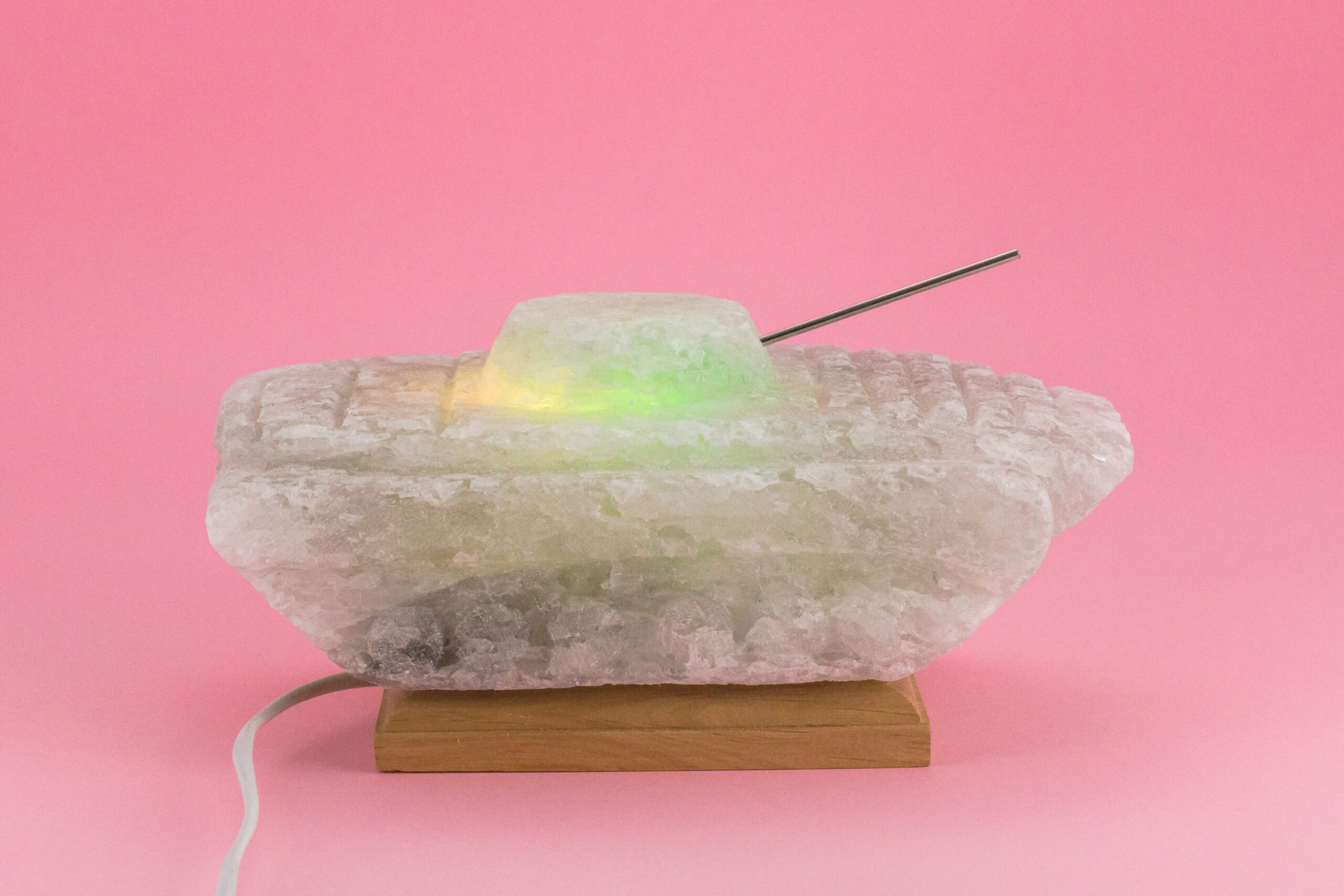The war in the Ukraine is a turning point. Wars shift all kinds of borders: personal, political, and moral. What happens to human beings when they become subject to these shifting borders? Nine artists from central, eastern, and southeastern Europe explore nation, belonging, autonomy, self-determination, identity, and leave-taking, in extremely personal and simultaneously highly political works.
The Urania has invited nine artists to show works exploring changes in internal and external boundaries. What does it mean to long for a homeland that no longer exists? When the country you were born in is no longer on the map, or is currently occupied and destroyed? What material are nations made of, and who has the control?
New artworks from central, eastern, and southeastern Europe at Urania Berlin.

Elektra KB, an artist with Columbian and Ukrainian roots who works in Brooklyn, NY, explores questions of gender, migration, transculturality, and abuses of power. Their works can be found in collections around the globe and exhibit a unique hybrid approach incorporating utopias and dystopias. At the Urania, Elektra KB will be presenting textile works and an installation with performances. The city of Kharkiv is at the center of Mykola Ridnyi’s work, it is also his birthplace. Ridnyi’s interdisciplinary artworks range from installations to sculpture and photography. At the Urania, he will be screening a video piece from 2014-15 on the brutal and violent conflict between pro-Ukrainian and pro-Russian activists.
Already on view in the Urania garden is The Temple of the Transfiguration, an installation by the Kyiv artist Sasha Kurmaz created during his residency at the Junge Akademie (AdK), where it was first shown in 2022. The object is the culmination of Kurmaz’s many years of research into Orthodox religion in the Ukraine and the active role of the church in the Russian-Ukrainian war since 2014. Andrii Dostliev and Lia Dostlieva explore themes of memory, collective trauma, and identity in performative installations using photography and sound. The intimate stories told in their artwork include memories of the city of Donetsk and reach back to the 1990s.
Childhood memoires also take center stage in the work of Lana Mesić, who was born in Yugoslavia in what is today Croatia. In the 1990s, she sought shelter in atomic bunkers, built Kalashnikovs out of LEGO, and asked herself: Who is actually the enemy? Central motifs of her work are the myths and symbols that nationalism employs to solidify identification. Robert Gabris asks who a country belongs to und who belongs to a county. The Slovakian artist’s work is often biographical and deals with issues of identity politics, queer bodies, and the margins of hegemonic society. With his abstract drawings, he creates his own Landscape of Dreamed, Naive, and Departed Love.

Daria Svertilova grew up in Odesa, and uses her camera as if she were collecting evidence: the fleeting traces of a vulnerable young generation. Her work also explores the coexistence of the Soviet legacy and a new, pro-European, spirit. Shortly before the outbreak of the war, the Berlin photographer and journalist Sina Opalka also took portraits of young Ukrainians she met while wandering the streets and cafés of Kyiv in January 2022. In them, she captured the final moments of peace before the start of the Russian offensive. You can book your ticket here.
MATERIAL NATION — Crossing Into Uncertainty
International Group Show
July 15 to Aug. 28, 2022
Opening:
July 14, 5:00 pm to 10:00 pm

#Dialogue
Eine Antwort zu „Crossing Into Uncertainty “
[…] The choice of location is not accidental. Rossin not only uses Tieranatomisches Theater as a venue but incorporates it into her work as a place where, as part of Humboldt-Universität zu Berlin, the systematic study of animal biology was initiated, leading to the scientific inquiry enabling us to intervene in animal and human anatomies. While the TA T now serves as a site of curatorial research and aesthetic practice, neuroscientists in the immediate vicinity are actively researching brain-computer interfaces based on animal studies, gaming, and other practices pursuing brain-machine interfaces. […]